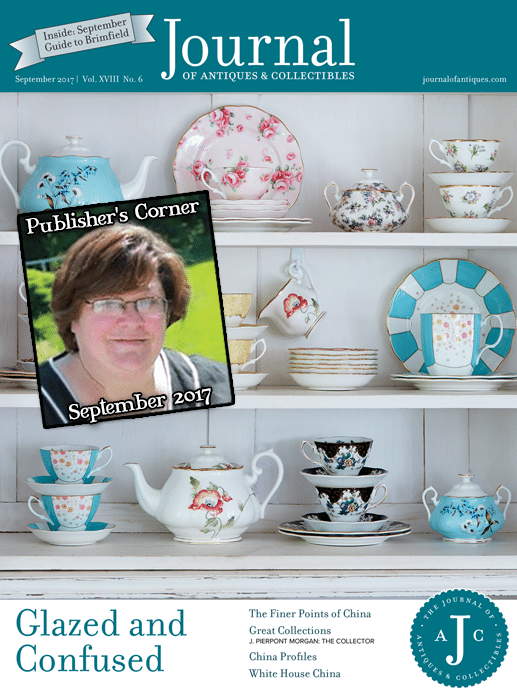Sorting Out the China
by Maxine Carter-Lome
Bone China, Fine China, Porcelain; then there is Soft Paste, Hard Paste, Ivory China, Bone Porcelain… People unfamiliar with the distinction use the words interchangeably and generally refer to this category of tableware and decorative objects as “china.” It comes down to this: unless you are enmeshed in the science and manufacturing of these wares, their proper titles can prove to be incredibly confusing, but the beauty is always there.
For ease of reference, the first three terms-Bone China, Fine China, and Porcelain-have some very real differences.
Bone china is, as its name suggests, made from bone – cow bone in particular. The bone is finely ground into bone ash, and it is then mixed with feldspar, ball clay, quartz and kaolin (a type of clay). The quality of the finished product is based on how much bone is in the mixture; which is a science that is used to define and create distinction between different brands and manufacturers. A high-quality bone china should contain at least 30 percent bone and can go as high as 40-45 percent. The higher the bone ash content, the stronger the bone china.
The same manufacturing processes are used in making china and porcelain, but without the bone content. The addition of bone ash gives bone china a warm color, while fine china is a brighter white. If you hold the china up to the light, you’ll see that bone china has a translucent quality compared to fine china.
Porcelain is also created in much the same way, but is fired at a higher temperature, which makes it harder than either type of china, but it also tends to be thicker in order to take the heat. If the temperature is high-around 1,455°C (2,650° F)-the finished product is known as porcelain. If it’s fired at a lower temperature-around 1,200°C (2,200° F)-it’s known as fine china.
Porcelain china was first made in China in a primitive form during the Tang dynasty (618-907), and in the form best known in the West during the Yuan dynasty (1279-1368). This true, or hard-paste porcelain, was made from petuntse, or china stone (a feldspathic rock), ground to powder and mixed with kaolin (white china clay).
Up until the early 18th century when Johann Friedrich Böttger discovered the magic formula, the recipe for making this highly prized import from China remained a mystery to Europeans. With that discovery, the Meissen factory at Albrechtsburg Castle in Meissen, Germany was established in 1710, making Meissen the first and oldest porcelain manufactory in Europe.
By the middle of the 18th century, English potteries started producing bone china in Staffordshire at Stoke-on-Trent, where Josiah Spode established his pottery, and in Bristol, where Royal Worcester got its start. From its commercial development and up to the later part of the 20th century, bone china was almost exclusively an English product.
Lenox, founded in 1889 by Walter Scott Lenox in Trenton, New Jersey, is the company and brand that dominates the history of American-made fine china. From the start, it was organized as an art studio and not as a factory. It did not produce a full range of ceramic articles but rather one-of-a-kind artwares; however, Lenox’s products became popular in the early 20th century when separate dining rooms and hostess parties became the new trend. Lenox then started making custom-designed, elaborately decorated dining plates. Facing stiff competition from European manufacturers, Lenox commissioned famous American artists such as William Morley to decorate his plates, leading Lenox to become the first North American bone china to be used in the White House. Since 1917, six Presidents and First Ladies have commissioned Lenox to create the official table service for the White House.
With the mass production of chinaware moving into the 20th century, porcelain china took on another application as an advertising medium, particularly for restaurants who branded their dinner plates, cups and saucers, and sometime kitschy table items such as creamers or egg cups with their name and or logo. This collectibles category is known as restaurant ware, also called hotel china. Potteries such as Homer Laughlin, Shenango, Jackson, Wallace, Syracuse, Tepco, and Buffalo are some of the best known manufacturers of restaurant ware, which is generally heavier than dinnerware produced for the home.
The china lexicon extends beyond the type of china to how the china was decorated (Glazed, Enameled, Gilded, Printed, etc.). The artistry, patterns, and applications employed in the design and decoration of china is as much a defining characteristic of a brand or type as is the compositional makeup of the object itself, which you will also learn more about in this month’s feature articles, as well as profiles on other types and brands of china.
We thank the many china clubs and manufacturers who stepped up to share information about their brand or category. Their knowledge and passion helps us to recognize and appreciate the distinctions between china types and brands, whether we’re collectors or just appreciate beautiful and beautifully decorated china objects, from figurines to tableware, and the history and craftsmanship they represent. Next time you sit down at a dinner party, sneak a peek to see the brand and pattern – but don’t let the hostess catch you!
-
- Assign a menu in Theme Options > Menus WooCommerce not Found





Related posts: